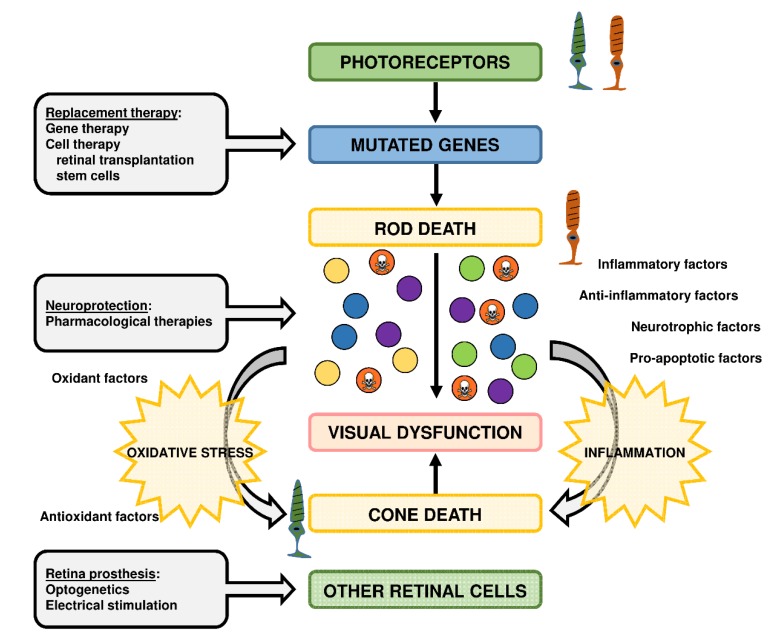Figure 4.
Therapeutic approaches for retinitis pigmentosa (RP), the most prevalent inherited retinal dystrophy. RP is characterized by progressive rod photoreceptor degeneration (mutated genes) in the initial stage and eventual cone photoreceptor degeneration in later stages. It is highly probable that cone degeneration is influenced by the release of inflammatory molecules, oxidant radicals, pro-apoptotic factors, etc. from rods and other cells, independently of the gene defect. Several therapeutic approaches have been developed to preserve retinal function or restore vision depending on the stage of the disease. They can be led to repair mutated photoreceptors (gene therapy), to replace damaged photoreceptors (cell therapy), or to protect photoreceptors and other retinal cells to the “toxic environment” (neuroprotective compounds including antioxidants). At later stages of RP, therapeutic approaches can be led to other retinal cells to restore visual activity with the remaining retinal circuits (optogenetics, retinal prostheses).

